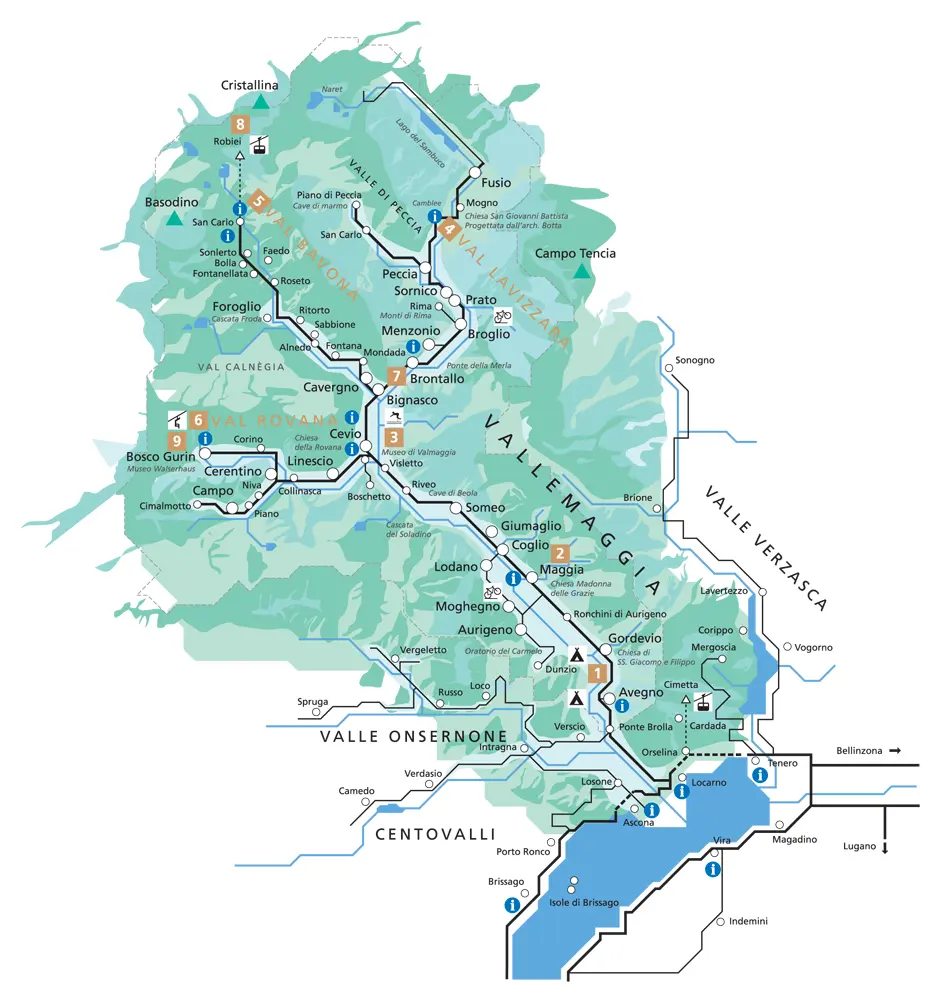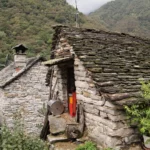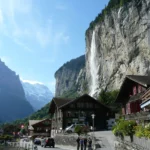Last Updated on 11/09/2023
Before the trip, I managed to find very little information about the Maggia Valley and we spent one day at Locarno, which I constantly regretted later. Who knows when to return to this region, and the Maggia Valley is really extremely interesting.
Compared to any of the three valleys, Locarno is just an average city, not too historical, not too beautiful. So that you do not repeat my mistake, I am telling you what you can see in the Maggia Valley
Lake Maggiore. Locarno and Ascona
Verzasca
Centovalli Railway
Lake Lugano attractions map
Ticino attractions map. Locarno, Bellinzona and valleys
Ticino guest cards and public transport Ticino
5 best viewpoints of Lake Lugano
Lake Lugano. 2. Lugano, Gandria, Melide, Carona
Lake Maggiore Attractions of Italian part
Valle Maggia is in fact three valleys: Bavona, Rovana and Lavizzara.

How to get to Maggia Valley
From Locarno, there is bus 315 to Cavergno via Bignasco – once an hour.
In Cavergno, you can change to bus for Bavona valley – bus 333 (from April to October, 4 times a day).
In Cevio, you can change to bus. 331 for Rovana valley (several times a day).
The schedule is designed in such a way that you can visit only one valley by public transport in one day.
What to see in Maggia Valley
The least interesting is the first and widest part of the valley up to Cevio, then it branches into three valleys.

Val Rovana – Bosco Gurin
Let’s start with the closest one – the Rovana gorge.
The most interesting point here is the German-speaking commune of Bosco Gurin. It appeared during the migration of the German-speaking Walser people from the canton of Valais. Up to 20 century the commune lived in almost complete isolation and had more contact with people from the Valais side than from the Ticino side. In the commune, speakers of the Walser dialect have survived, although now it is being supplanted by Italian.
There are also the old Walser houses – with a stone base and a wooden upper part. We have seen quite a few of these in the German-speaking cantons. In the oldest (14th century) house there is a museum.
A chairlift climbs to the nearby mountains.
Val Bavona
The most beautiful is the Val Bavona. There are some very interesting places here.
Those who travel by bus should take into account that the bus runs twice in the morning and twice in the late afternoon, so you need to either abandon some sights, or include a walk from one village to another in the route. For example, you arrive in the morning by bus to the end point of S. Carlo, go up by cable car, then go down and walk to Foroglio (1 hour 30 minutes), and from there you go back by 4- or 5-hour bus.
The end point in the gorge is the village of San Carlo. The main attraction here is the Robiei cable car. From the upper station of the cable car, you can walk to the dam and Lake Robie in half an hour. In addition to this lake, there are many more lakes, but it takes longer to get to them. You can download a map with routes from the cable car website.
Having gone down, go back along the valley. The next stop is the extremely picturesque and not very visited village of Sonlerto, with houses attached to huge boulders.
But the next point – Foroglio – is very popular, thanks to the waterfall. The village itself, of course, also deserves attention, as, indeed, many villages in the Bavona Valley.
The walking route from San Carlo to Foroglio takes an hour and a half (5 km, 200 m drop). Walk further down the valley – 2 hours, 300 m drop, 7.5 km.
Rarely visited, but judging by the photos, a very wild and beautiful place is the Calnegia gorge. This is a side gorge overlooking Foroglio. It has three very small villages with stone houses on steep cliffs. Hiking time to the village of Calnegia is an hour and a half (4 km), elevation difference is about 350 m.
Val Lavizzara
The Lavizzara Gorge is the least characteristic of the three.
Old villages with stone houses, chairlift up the mountain for skiing, a lake with a dam at the end of the valley. The most original attraction in this gorge is the modern church by architect Mario Botta, built on the ruins of a 17th century church: half of the village, together with the church, was destroyed by an avalanche in 1986.
All posts about #Ticino.
Do you enjoy the site without cookies? This means that I work for you at my own expense.
Perhaps you would like to support my work here.
Or change your cookie settings here. I don’t use personalized ads


